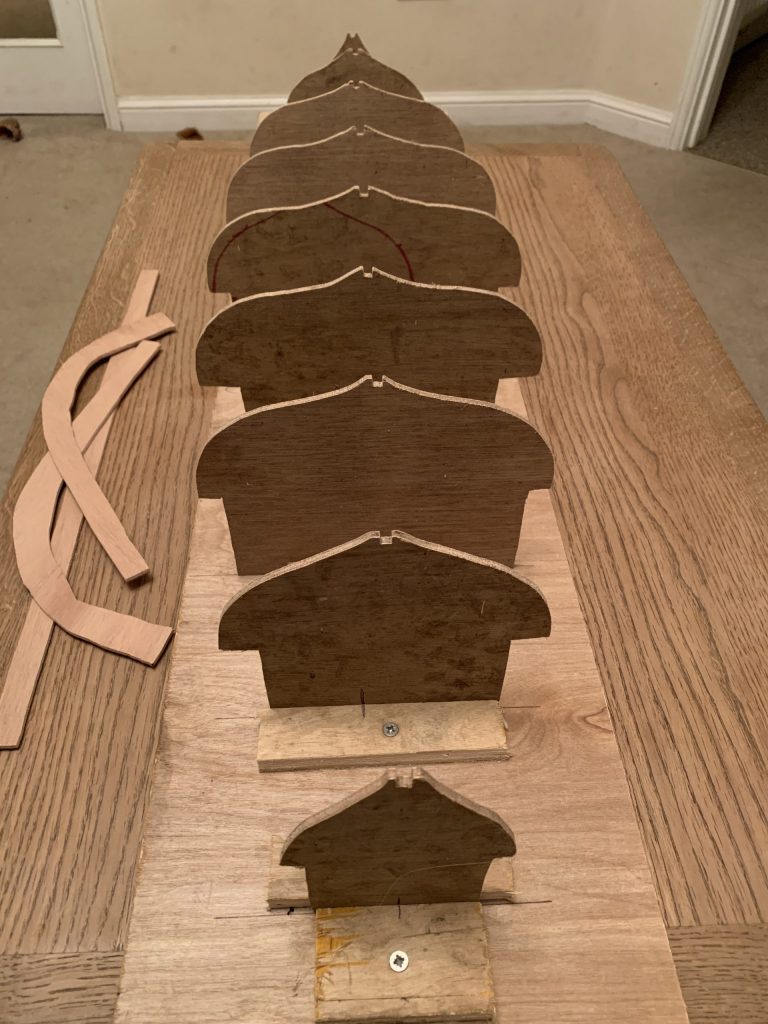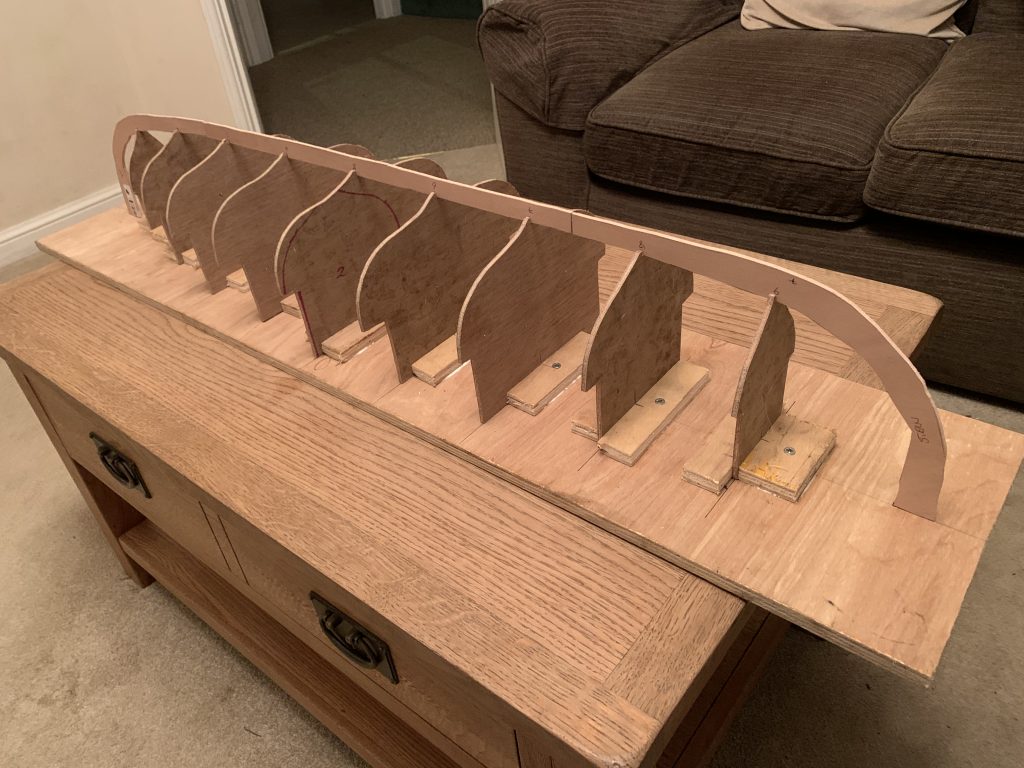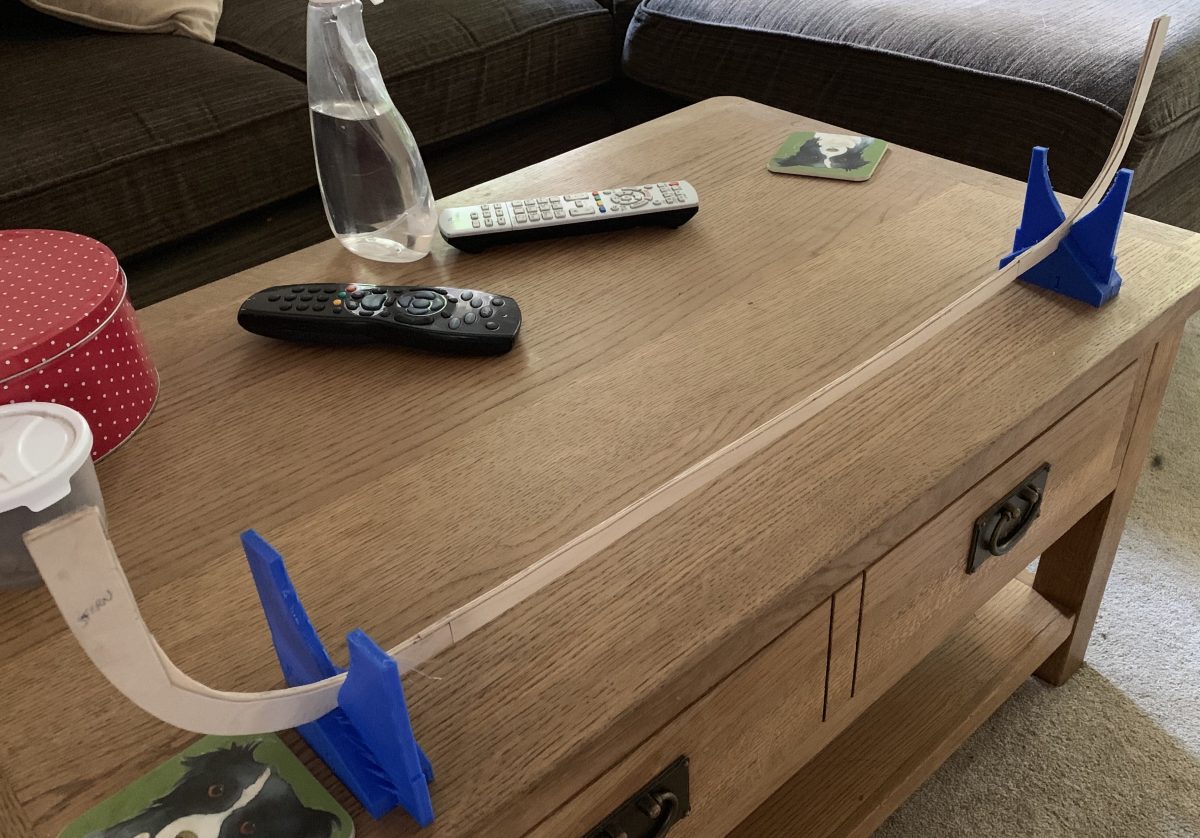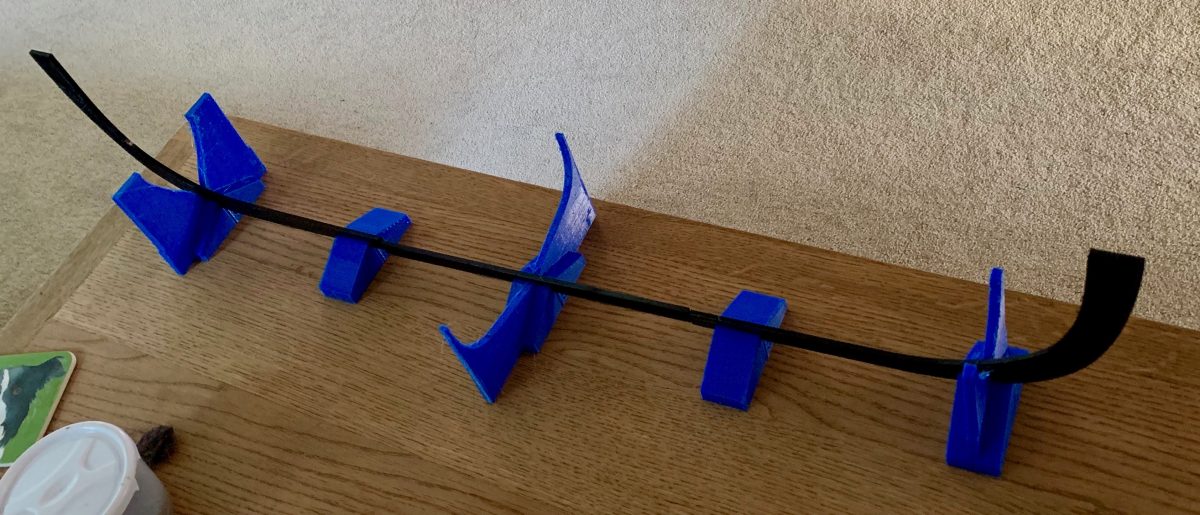All Viking ships begin with the keel and my model is no exception to that rule ! I’ve settled on a scale of 1:32, hopefully large enough to faithfully be able to model the components but small enough for transport/storage.
To aid in building the hull and ensuring symmetry and alignment, I cheated somewhat by creating and printing a 3D model of the basic keel shape and stands that will hold the keel securely.
The keel design, and the profile guides added to the stands, were taken from the available online plans of the original ship. I’ve had to use a conglomeration of different plans as many of them are not properly to scale/ratio and there are some differences between them so I’ve had to make some compromises. Rightly or wrongly I’ve chosen the deepest of the keels that appear in the plans, hoping that that will give a better performance and decrease lee drift.
For the plastic template I’ve created a very wide stem at both ends to give some scope for adjustment in the wooden version. The outer curve is correct but the inner is a lot deeper that the final version will be. I’m undecided yet on the stem design, I may try and make the top of the stems removable so I can swap between different designs. The “classic” interpretation of a dragon’s head seems to be falling out of favour with researchers and there is some evidence that the stem figures were removable.
I may end up creating 3D models/templates of other parts of the construction to help visualise and test the construction. I’ll upload the CAD files when I’m happy that they represent final versions.





